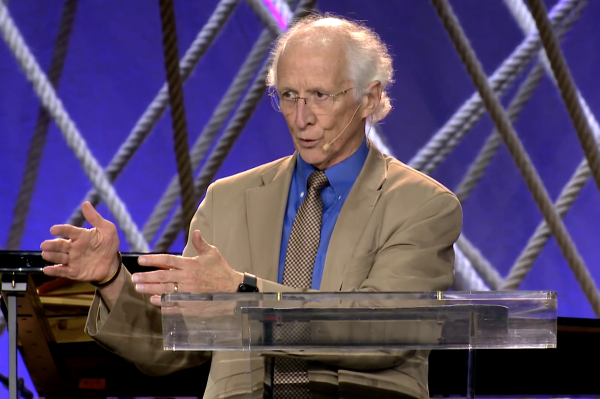Would C.S. Lewis Have Risked a Disney 'Nightmare?'
A newly published letter by C.S. Lewis shows how clearly he would have objected to a live-action version of his Chronicles of Narnia story, The Lion, The Witch, and the Wardrobe. Lewis writes in the letter dated Dec. 18, 1959, “I am absolutely opposed … to a TV version. Anthropomorphic animals, when taken out of narrative into actual visibility, always turn into buffoonery or nightmare.”
The Christian apologist was primarily concerned with the depiction of Aslan, the lion character who functions as an allegory of Jesus Christ: “A human, pantomime, Aslan [would] be to me blasphemy.” He further comments that an animated version would be acceptable, but laments that Walt Disney combines “so much vulgarity with his genius.” The letter raises a critical question for devotees of Lewis’s work: Should we be opposed to this past weekend’s live-action release?
On one level, the answer might be simple. Lewis explicitly says he is adamantly opposed to a live-action version. Therefore we should be, too. But on further inspection, the basis for Lewis’s opposition was the propriety of human pantomime of talking animals, particularly that of the lion Aslan. But the just-released Disney version answers this concern to a large extent, because Aslan is a CGI (computer graphics imaging) creation, much like The Lord of the Rings’ Gollum, a 21st century version of Lewis-era animation.
And since Lewis approves of this kind of depiction of Aslan, his major complaint seems to be answered. But his comment about the “vulgarity” of the work of Walt Disney raises a somewhat more complex question. Is there something about the medium of motion pictures (animation included) that is morally questionable?
One way to get at answering this question is to briefly review how a particular American denomination tackled the issue in the last century. The Christian Reformed Church in North America (CRC) is a small, historically ethnic denomination founded by immigrants from the Netherlands. In the first generations of immigration, these Dutch settlers were concerned about accommodation of their church to American culture. One of the salient points of concern was the so-called “film arts.”
In 1928, the governing assembly of the denomination, the CRC Synod, put forth its first official position on the Reformed Christian attitude toward movie-going, issuing a warning against theater attendance. The 1928 decision held that such “worldly amusements” as theater attendance were not inherently evil, but that their actual institutionalization in America was corrupt. Hollywood was seen as a haven for anti-Christian messages. Indeed, the temptation to worldliness in a medium renowned for its depictions and glorification of violence, lust, and depravity made it clear that Christians ought to avoid such practices.
In the ensuing decades, debate about the synodical decision grew, and the church’s position was clarified and modified to the current position: “film is a legitimate cultural medium to be used by Christians,” who “must exercise responsible, Spirit-guided, and enlightened discrimination in the use of the film arts.” The emphasis now is that the Christian should “engage in constructive critique of the film arts with the help of specialists, and cooperate with others to produce Christian films, videos, and television.”
So which of these positions does Lewis’s concern about Disney’s “vulgarity” agree with? And are these positions mutually exclusive? It’s clear that both Lewis’ opinion and the contention of the 1928 decision have in mind the proclivity of secular movies to be rife with themes that run contrary to the tenets of biblical Christianity. The situation in 1928 was such that the prudent course of action appeared to be complete withdrawal from the medium.
The wisdom of this course has been questioned in the following years, and the consensus is that rather than a complete withdrawal, the best course for Christians to take is a discriminating stance towards secular movies, and to actively participate in the creation of films consistent with biblical standards. Groups like The Dove Foundation have been created “to encourage and promote the creation, production and distribution of wholesome family entertainment.”
The Narnia phenomenon illustrates the rather striking reversal of the 1928 decision. Of the film’s $180 million budget, nearly $80 million has been spent on marketing, with primary focus on the use of churches and Christian groups in the marketing strategy. This past Sunday, at least one CRC congregation showed the complete 9-minute movie trailer during the actual worship service. While we should wonder whether churches’ embrace of movie marketing has taken us a bit too far in the opposite direction, we can agree with Lewis’s stepson, Douglas Gresham, that “the Enemy has been running the cinema. It’s time we took it back from him.”
_________________________________________________
Jordan J. Ballor is associate editor with the Acton Institute for the Study of Religion & Liberty in Grand Rapids, Mich.






















